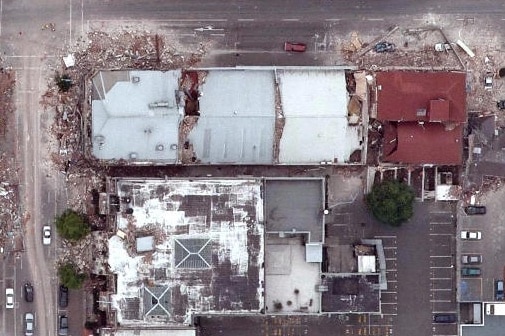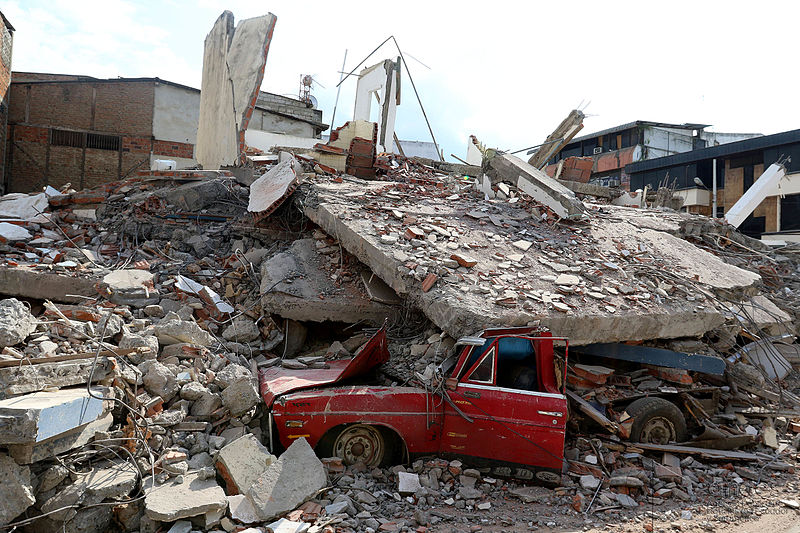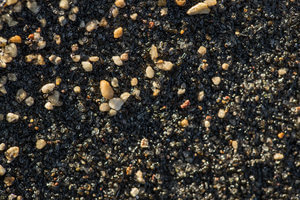Earthquakes are a powerful reminder of the intensity of nature’s forces. In a matter of minutes, they can topple buildings, fell power lines and kill hundreds of thousands of people. Luckily, this doesn’t happen often – although there are hundreds of earthquakes every week, there were only five earthquakes in 2017 that caused more than 10 fatalities.
Most deaths occur during an earthquake when buildings collapse, which is one reason most countries have strict seismic building codes. Japan is considered a prime example of a country that is earthquake prepared. Their rigorous buildings regulations were hugely beneficial in 2011 when a magnitude 9 earthquake hit the region, one of the largest earthquakes ever recorded. The tallest buildings in Tokyo swayed, but did not fall – likely saving millions of lives.
Dr. Virginia Toy is a New Zealand structural geologist with a strong interest in understanding earth deformation and seismic processes. As an academic staff member and PhD graduate from the University of Otago, she leads and contributes to a number of important geological research projects, including the Deep Fault Drilling Project on the Alpine fault in New Zealand.
On April 16, 2016, a 7.8 magnitude earthquake hit the city of Portoviejo in Ecuador, and caused substantial damage to the city in the process. Many of the buildings in the central part of the city were condemned, and 5 months later, thousands of residents were still living in temporary accommodation.
Researchers from the region saw that building damage in the area occurred in an apparently random way – that one building would be completely demolished, and a similarly constructed building in the same neighbourhood would be completely unharmed. It was clear to the researchers that differences in building damage were not just related to construction style – but had some relationship to the subsurface geology of the area. Dr. Toy was invited to collaborate with the local researchers from Escuela Politécnica Nacional and Yachay Tech to see if they could figure out why.
As a New Zealand native, Virginia had seen her home country go through similar hardships. A comparably destructive 6.2 magnitude earthquake had occurred in Christchurch, New Zealand, some years prior. A year before that, Christchurch had also been rocked by a 7.1 magnitude earthquake focussed some 50 km away in the town of Darfield. After both these earthquakes, Leapfrog Geo (a software created by Seequent for the generation of 3D geological models) was extensively used to analyse the relationship between subsurface geology and building failure.

Virginia knew about this work, and reached out to Seequent to see if we could generate a similar model for the Portoviejo region. Zak Hynd had previously been one of her students at University of Otago – and was now working for Seequent as a Product Specialist. He offered to help Virginia and the research team by creating a 3D model of the region using Leapfrog Geo. This model was paired with building damage assessment values done by structural engineers, so that the researchers could analyse relationships between building damage and geology.
The team did determine that there’s a correlation between the geology the building was constructed on, and how badly the building was damaged (you can read their full conclusions in their research paper here). They’re eager to complete more research to gain further insights and refine their new findings.

The difficult part about pinpointing causes of building damage during earthquakes, is that there are numerous influencing factors. Dr. Andrew Howell, a Seequent employee, tells us about how even the height of a building can change how it reacts during an earthquake: “Interestingly, the height of a building can affect what kind of earthquake will damage it the most. Bigger earthquakes have more energy which is released in longer-period seismic waves, at lower frequencies. This is important because all buildings have a natural resonant frequency. If the frequency of ground motion matches the natural resonance of the building, then there is a lot more shaking and potential damage to that building.”
But even this can become quite complicated. Virginia explains further: “Height is only one factor, the spacing and number of floors in the building also has a big influence on its ability to resonate in response to a particular frequency of ground motion.”
All of these findings will come in handy in the future – as our population grows, buildings grow taller and taller, and we will continue to have massively destructive earthquakes. Scientists are working diligently to establish technologies to protect us – like tuned mass dampers and ways to retrofit older homes – and each new study and new advance in building technology helps us understand and minimise casualties.
You can access the paper “Construction of a Three-Dimensional Geological Model of Portoviejo to Serve as a Base for Understanding Building Damage and Micro-seismic Hazard Assessment” through ResearchGate.





